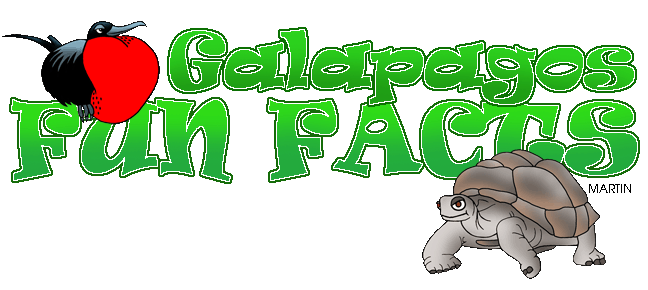Fun Facts about
the Galapagos Islands
The
islands were discovered by Tomas de Berlanga, the Bishop of Panama, in
1535. His boat went off course on his way to Peru. (Who gets
lost for 600 miles?) He named the islands "Galapagos." It
was Spanish for "tortoise" -- and the islands are famous for them
Three hundred years later, in 1835, Charles Darwin visited the islands for five weeks. His observations helped to form his theory of evolution.
All of the islands have names in both Spanish and English.
Four islands have people living on them (Isabela, Santa Cruz, Floreana, and San Cristobal). Baltra has the airport. The other islands are uninhabited by humans but have a wide variety of unusual plants and animals. Scientists claim 47% of the plants grow nowhere else and 97% of the reptiles are found no place else on earth.
The Galapagos Islands are the world's second largest marine reserve.
The Galapagos tortoises can grow up to six feet long, weigh up to 880 pounds (400kg) and live over 100 years.
The Galapagos penguins are the worlds second smallest penguins and the only ones to live in the tropics.
The marine iguana are the world's only marine lizards. You find them all over the Galapagos Islands but no where else.
Apples are native the islands. However, the fruit and sap of the manzanillo apple trees are poisonous. How do you like them apples?
The main businesses on the islands surround tourism and commercial fishing.
Three hundred years later, in 1835, Charles Darwin visited the islands for five weeks. His observations helped to form his theory of evolution.
All of the islands have names in both Spanish and English.
Four islands have people living on them (Isabela, Santa Cruz, Floreana, and San Cristobal). Baltra has the airport. The other islands are uninhabited by humans but have a wide variety of unusual plants and animals. Scientists claim 47% of the plants grow nowhere else and 97% of the reptiles are found no place else on earth.
The Galapagos Islands are the world's second largest marine reserve.
The Galapagos tortoises can grow up to six feet long, weigh up to 880 pounds (400kg) and live over 100 years.
The Galapagos penguins are the worlds second smallest penguins and the only ones to live in the tropics.
The marine iguana are the world's only marine lizards. You find them all over the Galapagos Islands but no where else.
Apples are native the islands. However, the fruit and sap of the manzanillo apple trees are poisonous. How do you like them apples?
The main businesses on the islands surround tourism and commercial fishing.
